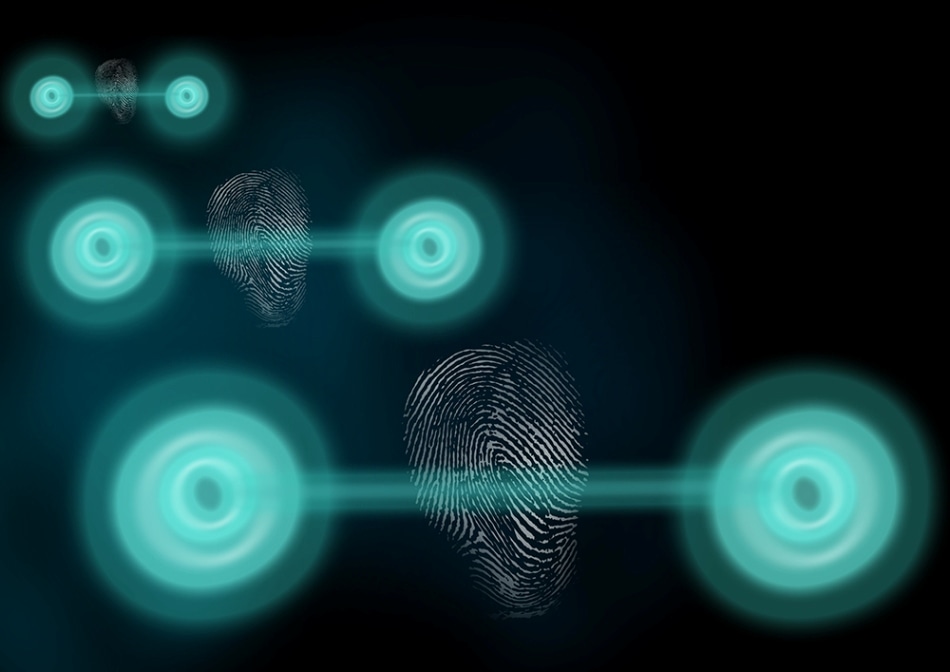May 30 2017
 Measuring the fingerprint of quantum states could help to guard against errors and defective devices in quantum technologies. The existence of such a fingerprint was previously known only for limited cases: researchers in Singapore and the United States have now calculated how to measure a fingerprint for all states of two entangled particles. The findings were published 26 May in Nature Communications. Credit: CQT
Measuring the fingerprint of quantum states could help to guard against errors and defective devices in quantum technologies. The existence of such a fingerprint was previously known only for limited cases: researchers in Singapore and the United States have now calculated how to measure a fingerprint for all states of two entangled particles. The findings were published 26 May in Nature Communications. Credit: CQT
Scientists from CQT and Caltech have found out that the entire entangled states of a two-particle system possess a classical fingerprint. The discovery can assist engineers to eliminate errors and fix devices that do not perform as expected in quantum cryptography and quantum computing.
Goh Koon Tong and Valerio Scarani from CQT and Andrea Coladangelo from Caltech have concluded that a simple set of measurements can perform as an identity check for virtually any two-particle entangled state. The outcomes of the research were published on 26 May 2017 in the journal Nature Communications. The existence of the fingerprint can assist in certifying quantum encryption devices or quantum computers bought from third parties.
Power to the people
An entangled quantum state comprises of two or more particles which may have multiple uncertain outcomes. Such states power up quantum computing and enable secured quantum communication. However, the difficulty here is that it is hard to investigate whether these states possess the anticipated characteristics, leading to the prevalence of poor-performing devices.
“I like to see our work as bringing the power of testing quantum devices to the consumers who use them. Currently, only those who build the devices or understand the engineering aspect of them can perform the test,” stated Koon Tong. Quantum physicists can also apply the “self-testing” tool as an investigation step in laboratory experiments.
The study develops the outcomes achieved by other research teams, expanding outcomes for qubits to the highly exotic qudits, which are higher-dimensional quantum bits. In contrast to information merely as a binary bit, that is, 0 or 1, a qudit possesses larger information density, storing 0, 1, 2, 3, 4, and so on. Although such states are difficult to produce, they are fascinating as they have the ability to speed up specific communication or computing tasks.
The self-testing concept is remarkable as it is normally hard to acquire more information on a particle’s quantum state. The state of a particle is outlined by a “wave function” in which the prospective characteristics of the particle—for example, momentum or polarization—are hidden. In order to be confident regarding a quantum state, knowledge of the whole wave function is crucial. Still, there is a difficulty in this case. Measurement of the quantum state shows only one value and not the complete set of probabilities.
Blind tomography
The conventional technique for studying the full quantum state is tomography, which necessitates measuring many copies of the quantum state in disparate ways. The results of numerous measurements are combined to obtain a full set of possibilities. It even includes a tedious procedure of characterization of the measurement devices and lining them up with the source of the quantum particles.
Apart from being highly efficient and necessitating only few measurements, self-testing is also “device-independent,” or similar to blind tomography, that is, it does not mandate characterization of the measurement device, so long that the device surely detects much of the particles. This is due to the fact that the fingerprint is a pattern of outcomes covering measurements of the two particles that can be constantly produced only by the mysterious correlations in the quantum state and not accidentally or through any classical process. Therefore, if this pattern is observed, it indicates the existence of the quantum state.
The well-known “CHSH experiment” in quantum physics is an instance of fingerprinting for a quantum state of two qubits. In order to show that there are fingerprint tests for all two-qudit states, the researchers demonstrated that such states can be taken to be consisting of blocks of two-level systems, similar to qubits. More satisfactory is the fact that this mathematical equivalence indicates the necessary measurements to be carried out, though it is not explicit to date whether they are can be performed easily.
The researchers believe that this finding will inspire a new age of studies to discover effortless methods to include this check in devices or experiments. Until now the indications are good. “Of all my work in the past five years, this has attracted the most attention,” stated Valerio. Apart from discussing with colleagues inquisitive about the outcomes, Valerio has been requested to hold a lecture on self-testing at QCrypt, an annual conference on quantum cryptography to be held in September 2017 in the United Kingdom.